|
 |
 Автор: Williams Автор: Williams
 Дата: 24 октября 2020 Дата: 24 октября 2020
 Просмотров: 2 136 Просмотров: 2 136 |
| |
M. Rashad Islam, Rafiqul A. Tarefder - Pavement Design
Materials, Analysis, and Highways
McGraw Hill, 2020
pdf, 574 pages, english
ISBN: 978-1-26-045892-3

The authors are delighted to introduce this pavement design book to civil engineering students. It focuses on the most recent invention in pavement design, the pavement mechanistic-empirical (ME) design approach. Practical design examples are included in this textbook to help students understand the pavement mechanics and models used in this new approach. Fundamentals of Engineering (FE) exam-style questions are also included so that this book can be helpful for the FE examination as well. The authors believe that this text will be valuable for understanding pavement engineering. |
| |
 Читать статью дальше (комментариев - 19)
Читать статью дальше (комментариев - 19)
| |
|
 |
 Автор: Williams Автор: Williams
 Дата: 22 октября 2020 Дата: 22 октября 2020
 Просмотров: 2 260 Просмотров: 2 260 |
| |
Michael Law, Amy Collins - Getting to Know ArcGIS Pro v2.6
Esri Press, 2020
pdf, 236 pages, english
eISBN: 9781589486362
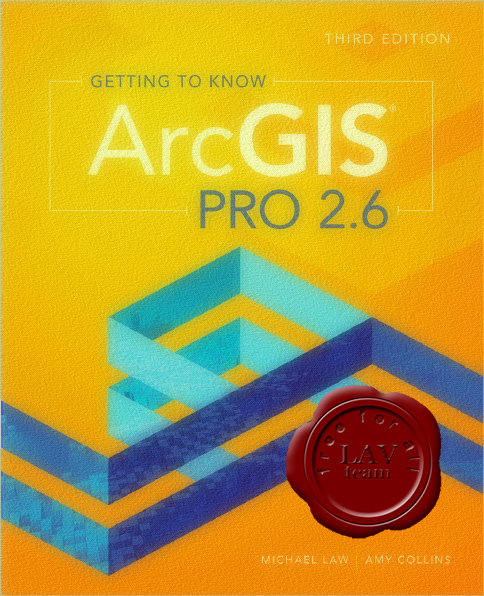
Continuing the tradition of the best-selling Getting to Know series, Getting to Know ArcGIS Pro 2.6 teaches new and existing GIS users how to get started solving problems using ArcGIS Pro. Using ArcGIS Pro for these tasks allows you to understand complex data with the leading GIS software that many businesses and organizations use every day.
Getting to Know ArcGIS Pro 2.6 introduces the basic tools and capabilities of ArcGIS Pro through practical project workflows that demonstrate best practices for productivity. Explore spatial relationships, building a geodatabase, 3D GIS, project presentation, and more. Learn how to navigate ArcGIS Pro and ArcGIS Online by visualizing, querying, creating, editing, analyzing, and presenting geospatial data in both 2D and 3D environments. Using figures to show each step, Getting to Know ArcGIS Pro 2.6 demystifies complicated process like developing a geoprocessing model, using Python to write a script tool, and the creation of space-time cubes. Cartographic techniques for both web and physical maps are included.
Each chapter begins with a prompt using a real-world scenario in a different industry to help you explore how ArcGIS Pro can be applied for operational efficiency, analysis, and problem solving. A summary and glossary terms at the end of every chapter help reinforce the lessons and skills learned.
Ideal for students, self-learners, and seasoned professionals looking to learn a new GIS product, Getting to Know ArcGIS Pro 2.6 is a broad textbook and desk reference designed to leave users feeling confident in using ArcGIS Pro on their own. |
| |
 Читать статью дальше (комментариев - 12)
Читать статью дальше (комментариев - 12)
| |
|
 |
 Автор: Williams Автор: Williams
 Дата: 20 октября 2020 Дата: 20 октября 2020
 Просмотров: 1 402 Просмотров: 1 402 |
| |
Ivan Vanicek, Daniel Jirasko, Martin Vanicek - Modern Earth Structures for Transport Engineering
Engineering and Sustainability Aspects
CRC, 2020
pdf, 185 pages, english
ISBN: 978-0-429-26366-8
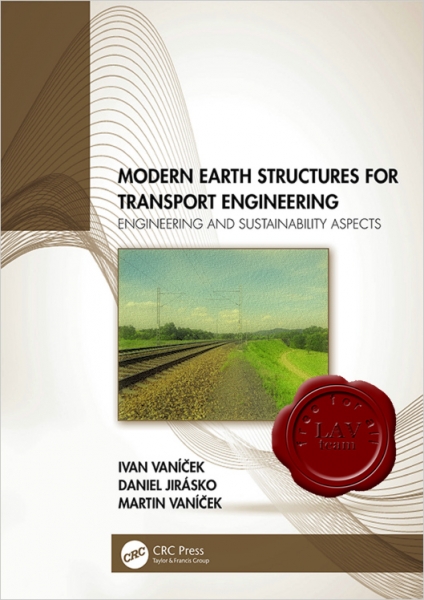
Earth structures together with foundation structures and underground structures fall under the more general subject matter of geotechnical structures. Under the term geotechnical structures earth structures are the oldest matter of concern, but rather paradoxically in comparison to foundation structures (foundation engineering) and to underground structures (tunnelling), the first monograph covering all aspects of earth structures was written only one decade ago (Vaníček and Vaníček, 2008). Briefly stated, we can use the following categorical explication for the division of geotechnical structures:
- Construction with ground for earth structures, where ground (soil) is the natural and most used construction material;
- Construction on the ground for foundation structures;
- Construction in the ground for underground structures.
This book will deal only with earth structures for transport engineering, although it is recognized that earth structures for water or environmental engineering also generate other interesting concerns. Embankments and cuts of motorways and railways comprise the main subject of the presented material. However, the main recommendations are valid also for airfields and parking areas.
Development in each profession is progressing in the form of individual steps, wherein a hierarchical part relates to new knowledge or to pressure from society to improve something, and a lateral part is more connected with the implementation of this knowledge into general practice. For earth structures, development was very slow up to the beginning of the 20th century, when design was mostly based on previous experience. The first significant advance is usually connected with the principle of effective stresses and the theory of consolidation (Terzaghi, 1925, 1943). Other advances were made in the 1950s to 1970s with new testing devices Bishop and Henkel (1957, 1962), the principle of stress path (Lambe and Whitman, 1969), and the implementation of numerical methods for the design of structures (Zienkiewicz, 1967).
Present-day demands on earth structures in transport engineering are strongly influenced by two aspects.
The technical engineering aspect involves structure safety, along with optimal design and implementation. From this perspective, all new knowledge should be applied. Nevertheless, the basic approach to safety and optimal design is strongly affected by geotechnical risk, to which this design and structure implementation is connected. However, to guarantee a certain level of safety for a certain structure, some standards should be accepted. For example, in Europe these standards are included in Eurocode 7 (EC 7) Geotechnical Design (EN 1997).
The second aspect is strongly connected with acceptance of the principle of sustainable development, which was specified at the highest level during the international "Environmental Summit” in Rio de Janeiro in 1992. Gro Harlem Brundtland, the Norwegian prime minister, used for example the following definition of sustainable development: "Development which responds to the needs of the present without compromising the capacity of future generations to respond to their needs.” However, the sustainability approach strongly relates to two other principles, which are nowadays specified for earth structures in transport engineering – the principles of availability and affordability.
Both aspects form the essence of this book, and therefore the term "modern” can be used for this stage of development. The authors recognize with great appreciation support from the Czech Technical University in Prague where the research project CESTI (the Centre for Effective and Sustainable Transport Infrastructure) is being carried out. |
| |
 Читать статью дальше (комментариев - 7)
Читать статью дальше (комментариев - 7)
| |
|
 |
 Автор: Williams Автор: Williams
 Дата: 17 октября 2020 Дата: 17 октября 2020
 Просмотров: 1 407 Просмотров: 1 407 |
| |
R. Winston Revie - Oil and Gas Pipelines: Integrity and Safety Handbook
Wiley, 2015
pdf, 855 pages, english
ISBN: 978-1-118-21671-2
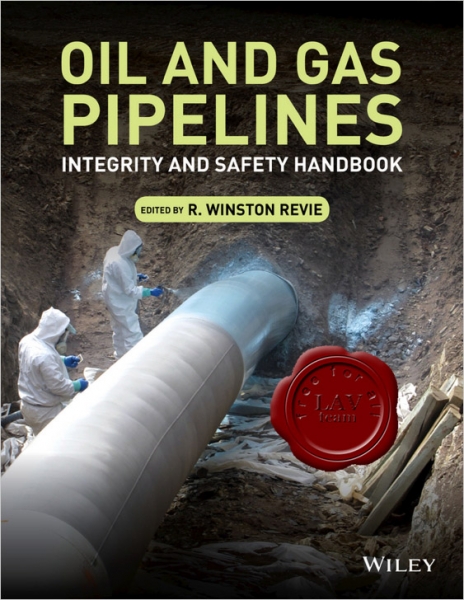
It's a comprehensive and detailed reference guide on the integrity and safety of oil and gas pipelines, both onshore and offshore.
- Covers a wide variety of topics, including design, pipe manufacture, pipeline welding, human factors, residual stresses, mechanical damage, fracture and corrosion, protection, inspection and monitoring, pipeline cleaning, direct assessment, repair, risk management, and abandonment.
- Links modern and vintage practices to help integrity engineers better understand their system and apply up-to-date technology to older infrastructure.
- Includes case histories with examples of solutions to complex problems related to pipeline integrity.
- Includes chapters on stress-based and strain-based design, the latter being a novel type of design that has only recently been investigated by designer firms and regulators.
- Provides information to help those who are responsible to establish procedures for ensuring pipeline integrity and safety.
|
| |
 Читать статью дальше (комментариев - 7)
Читать статью дальше (комментариев - 7)
| |
|
 |
 Автор: Williams Автор: Williams
 Дата: 8 октября 2020 Дата: 8 октября 2020
 Просмотров: 979 Просмотров: 979 |
| |
Shuyu Sun, Tao Zhang - Reservoir Simulations: Machine Learning and Modeling
Elsevier, 2020
pdf, 341 pages, english
ISBN: 978-0-12-820957-8

Reservoir Simulation: Machine Learning and Modeling helps the engineer step into the current and most popular advances in reservoir simulation, learning from current experiments and speeding up potential collaboration opportunities in research and technology. This reference explains common terminology, concepts, and equations through multiple figures and rigorous derivations, better preparing the engineer for the next step forward in a modeling project and avoid repeating existing progress. Well-designed exercises, case studies and numerical examples give the engineer a faster start on advancing their own cases. Both computational methods and engineering cases are explained, bridging the opportunities between computational science and petroleum engineering. This book delivers a critical reference for today’s petroleum and reservoir engineer to optimize more complex developments. |
| |
 Читать статью дальше (комментариев - 1)
Читать статью дальше (комментариев - 1)
| |
|
 |
 Автор: Williams Автор: Williams
 Дата: 2 октября 2020 Дата: 2 октября 2020
 Просмотров: 3 314 Просмотров: 3 314 |
| |
Munir Hamad - AutoCAD 2021 Beginning and Intermediate
Mercury Learning and Information, 2020
pdf, 767 pages, english
ISBN: 978-1-683925-224

This book is the most comprehensive book you will find on AutoCAD 2021 – 2D Drafting. Covering all of the 2D concepts, it uses both metric and imperial units to illustrate the myriad drawing and editing tools for this popular application. Use the companion files to set up drawing exercises and projects and to see all of the book’s figures in color (Files also available for downloading with Amazon order number by writing to the publisher at info@merclearning.com). AutoCAD 2021 Beginning and Intermediate includes over 100 "mini-workshops” that complete small projects from concept through actual plotting. Solving all of these workshops will simulate the creation of three projects (architectural and mechanical) from beginning to end, without overlooking any of the basic commands and functions in AutoCAD 2021.
Features
- Designed for novice users of AutoCAD 2021. Most useful for "teach yourself” or instructor-led AutoCAD training in Level 1 or 2.
- New chapter on the "Drawing Compare” function.
- Companion files featuring drawings, practice and finished plots, 4-color figures, etc.
- Includes over 100 "mini-workshops” and hundreds of figures that complete small projects.
- Uses both English and metric units in examples, exercises, projects, and descriptions.
- Covers three full projects (metric and imperial) for architectural and mechanical designs.
- Helps you to prepare for the AutoCAD Certified Professional exam.
- Exercises and instructor’s resources available for use as a textbook.
|
| |
 Читать статью дальше (комментариев - 11)
Читать статью дальше (комментариев - 11)
| |
|
 |
 Автор: Williams Автор: Williams
 Дата: 28 сентября 2020 Дата: 28 сентября 2020
 Просмотров: 1 428 Просмотров: 1 428 |
| |
Donald Newnan, Ted Eschenbach, Jerome Lavelle, Neal Lewis - Engineering Economic Analysis, 14th Edition
Oxford University Press, 2020
pdf, 1350 pages, english
ISBN: 978-0-19-093191-9
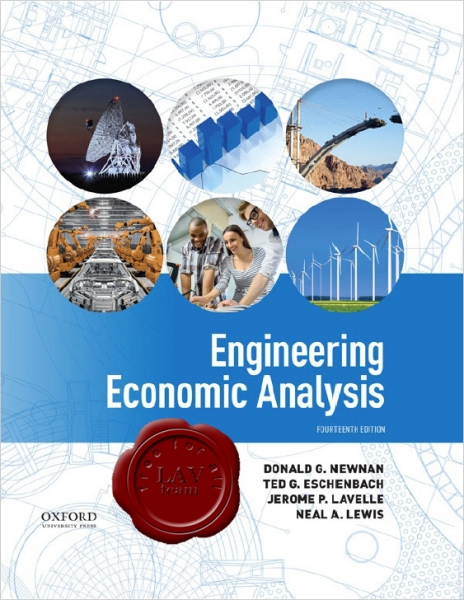
Engineering Economic Analysis offers comprehensive coverage of financial and economic decision making for engineers, with an emphasis on problem solving, life-cycle costs, and the time value of money. The authors' clear, accessible writing, emphasis on practical applications, and relevant contemporary examples have made this text a perennial bestseller. With its logical organization and extensive ancillary package, Engineering Economic Analysis is widely regarded as a highly effective tool for teaching and learning. This 14th edition includes crucial updates to cover new US tax laws and software that will algorithmically generate and automatically grade homework problems. |
| |
 Читать статью дальше (комментариев - 10)
Читать статью дальше (комментариев - 10)
| |
|
 |
 Автор: Williams Автор: Williams
 Дата: 24 сентября 2020 Дата: 24 сентября 2020
 Просмотров: 1 703 Просмотров: 1 703 |
| |
Авакян В.В. - Прикладная геодезия: технологии инженерно-геодезических работ
3-е издание, исправленное и дополненное
Инфра-Инженерия, 2019
pdf, 617 pages, russian
ISBN: 978-5-9729-0309-2
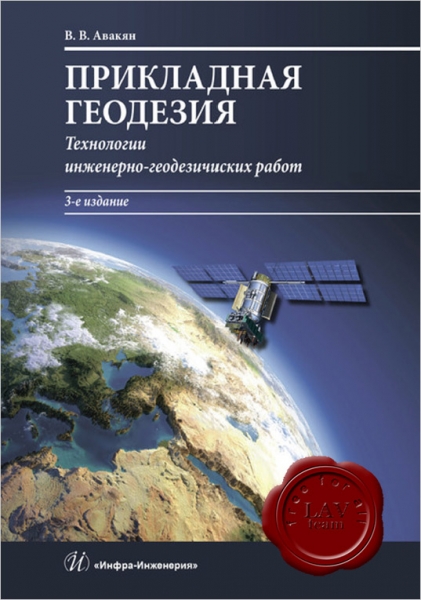
В учебном пособии изложены методы, техника и технология производства инженерно-геодезических работ при изысканиях и строительстве инженерных сооружений, гражданских зданий, гидротехнических, подземных и других объектов строительства. Отражены перемены, связанные с внедрением новых средств измерений, спутниковых геодезических приёмников, электронных тахеометров, цифровых нивелиров, а также программных средств вычислений и обработки результатов измерений. Приведенные технологии соответствуют актуализированным редакциям действующих нормативных актов. |
| |
 Читать статью дальше (комментариев - 14)
Читать статью дальше (комментариев - 14)
| |
|
 |
 Автор: Williams Автор: Williams
 Дата: 22 сентября 2020 Дата: 22 сентября 2020
 Просмотров: 1 771 Просмотров: 1 771 |
| |
W. Larsen Angel - HVAC Design Sourcebook
McGraw Hill, 2020
pdf, 480 pages, english
ISBN: 978-1-26-045725-4
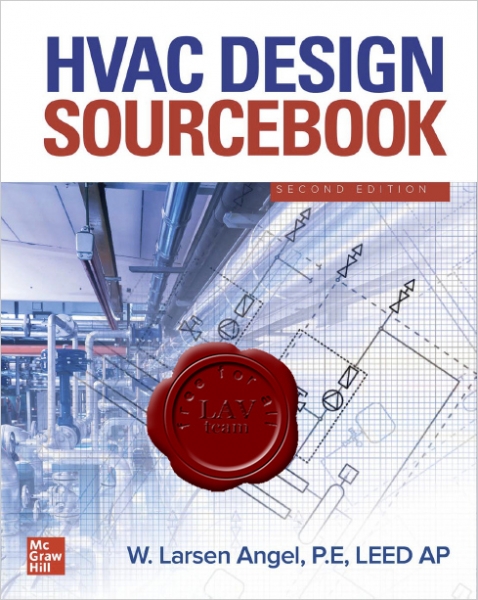
The definitive guide to HVAC design - thoroughly revised for the latest technologies. This fully updated guide covers the entire HVAC system design process from concept to commissioned systems. Written by a recognized HVAC expert, the book illustrates each step through photographs, drawings, and comprehensive discussions. This new edition has been completely refreshed to align with current industry standards and includes several brand-new chapters. HVAC Design Sourcebook, Second Edition contains a chapter-long case study that provides a step-by-step look at the design of a real-world HVAC project.
Coverage includes:
- The design process.
- Piping, valves, and specialties.
- Central plant and air systems.
- Piping and ductwork distribution systems.
- Terminal equipment.
- Variable refrigerant flow systems.
|
| |
 Читать статью дальше (комментариев - 10)
Читать статью дальше (комментариев - 10)
| |
|
 |
 Автор: Williams Автор: Williams
 Дата: 17 сентября 2020 Дата: 17 сентября 2020
 Просмотров: 472 Просмотров: 472 |
| |
Catherine Bertrand, Sophie Denimal, Marc Steinmann, Philippe Renard - Eurokarst 2018, Besançon
Advances in the Hydrogeology of Karst and Carbonate Reservoirs
Springer, 2020
pdf, 243 pages, english
ISBN: 978-3-030-14014-4
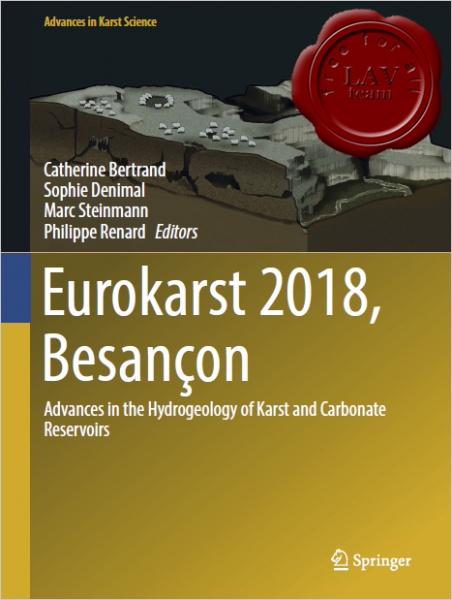
This book presents selected papers from the EuroKarst 2018 conference, which highlighted the latest advances in the field of Karst Hydrogeology and Carbonate Reservoirs. The event attracted more than 180 participants. From among their contributions, the papers were selected and subsequently reviewed by the scientific committee to ensure the highest possible quality. |
| |
 Читать статью дальше (комментариев - 1)
Читать статью дальше (комментариев - 1)
| |
|
 |
| ПОИСК ПО САЙТУ |
 |
|
 |
| КАЛЕНДАРЬ | | |
 |
| « Октябрь 2025 » |
|---|
| Пн | Вт | Ср | Чт | Пт | Сб | Вс |
|---|
| | 1 | 2 | 3 | 4 | 5 | | 6 | 7 | 8 | 9 | 10 | 11 | 12 | | 13 | 14 | 15 | 16 | 17 | 18 | 19 | | 20 | 21 | 22 | 23 | 24 | 25 | 26 | | 27 | 28 | 29 | 30 | 31 | |
|
 | |
| |
|